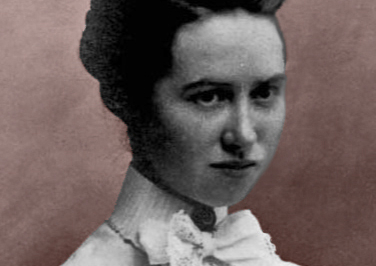
Marianne Moore’s exacting descriptions of the natural world feature prominently in her poetry. While a student at Bryn Mawr Collecte she worked extensively in the laboratory; “The Jellyfish,” one of her first published poems, was written in response to close observation of the invertebrate. In the following letter to her young nephew, Moore describes a visit to the American Museum of Natural History in Manhattan. Her encounter with the ant-eater might very well have served as inspiration for “The Pangolin,” written four years later.
To John Warner Moore, Jr.
December 9, 1932
Brooklyn, NY
Dear Johnnie,
I guess you know what this is. There was a picture of an ant-eater like this in the book about strange animals, that you gave me; and it is walking on the backs of its hands and has a large plumy tail…What wouldn’t I give if you had all been with me today at the Museum. In the Nature Room, there are live white rats, a kangaroo-rat, a flying squirrel, a gray squirrel, and several other live animals. The kangaroo-rat has the softest fur I ever felt and I wish you could have seen it fill its cheeks with bird-seed and hop to a corner of the cage and bury it in the sand and then go to sleep in a ball not much bigger than a walnut…It has a little house the size of a strawberry box.
I was allowed to pick up the tiger salamander but did not hold it long for it loves to cover itself up with black moss and not let a soul see it. It was about five inches long, with black islands and circles on a pale gray background, and rests in curve that are more graceful than anybody could draw…
There was too…a perfect model of beavers building a dam and stocking their lake-side with twigs for the winter, and among the insects was a moth bigger than my hand with lavender stripes, one on each wing, and moon-like peacock eyes…I passed it and then went back to make a hurried picture. Two boys came up close to see the picture, and one said as if he were not very serious, “the ar-tist!” But I did not take offense and we talked for several minutes about the bird pictures and the mosses that were exhibited and labeled near-by.
Your daddy might have been interested in the many sun-dials and compasses showing the history of such things from the very beginning. Many were pocket dials with a compass about as big as a quarter at the bottom…And the numbers were beautifully engraved in brass.
The ant-eater does not seem to want me to type-write all over his Pomeranian tail, so good-bye, and give my love to each one.
Affectionately,
Rat

The ant-eater I saw and made this picture of is about as long as your dining-room table.
From Marianne Moore: Selected Letters. New York: Penguin (1998), pgs. 284-285.
Note: Johnnie Moore’s “daddy,” was John Warner Moore, Marianne Moore’s older brother. The family addressed each other with nick-names adapted from Kenneth Grahame’s The Wind and the Willows. Marianne, as in the letter above, was known as “Rat,” her mother Mary as ” Mole,” and John Warner as “Badger.”
FURTHER READING
A review of the recently published biography by Linda Leavell, with a detailed account of Moore’s familial relationships.
Moore’s famous tricorn hat, with a description of her “poetic assemblage” process.
“The Pangolin,” along with a few other nature-inspired poems.


